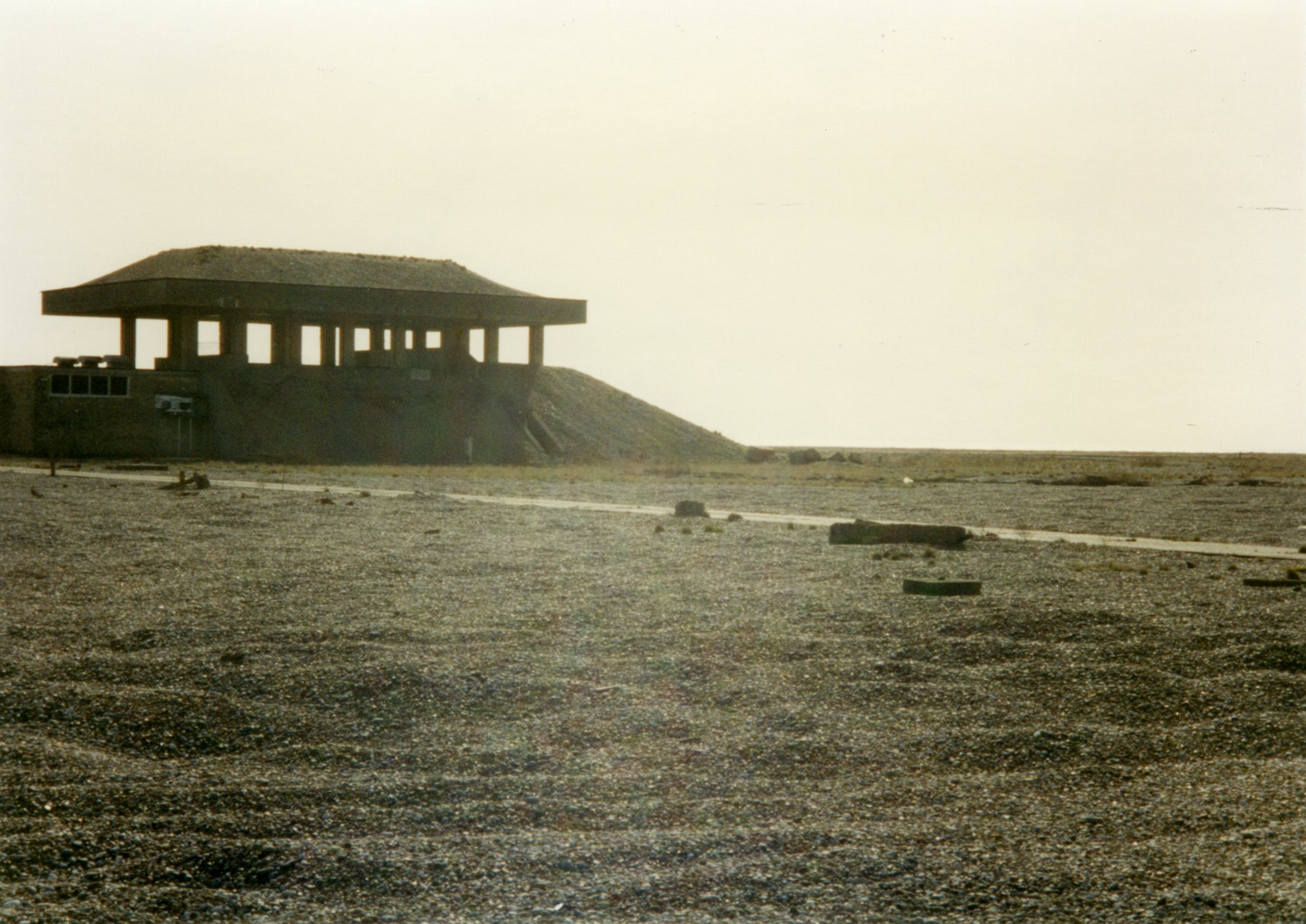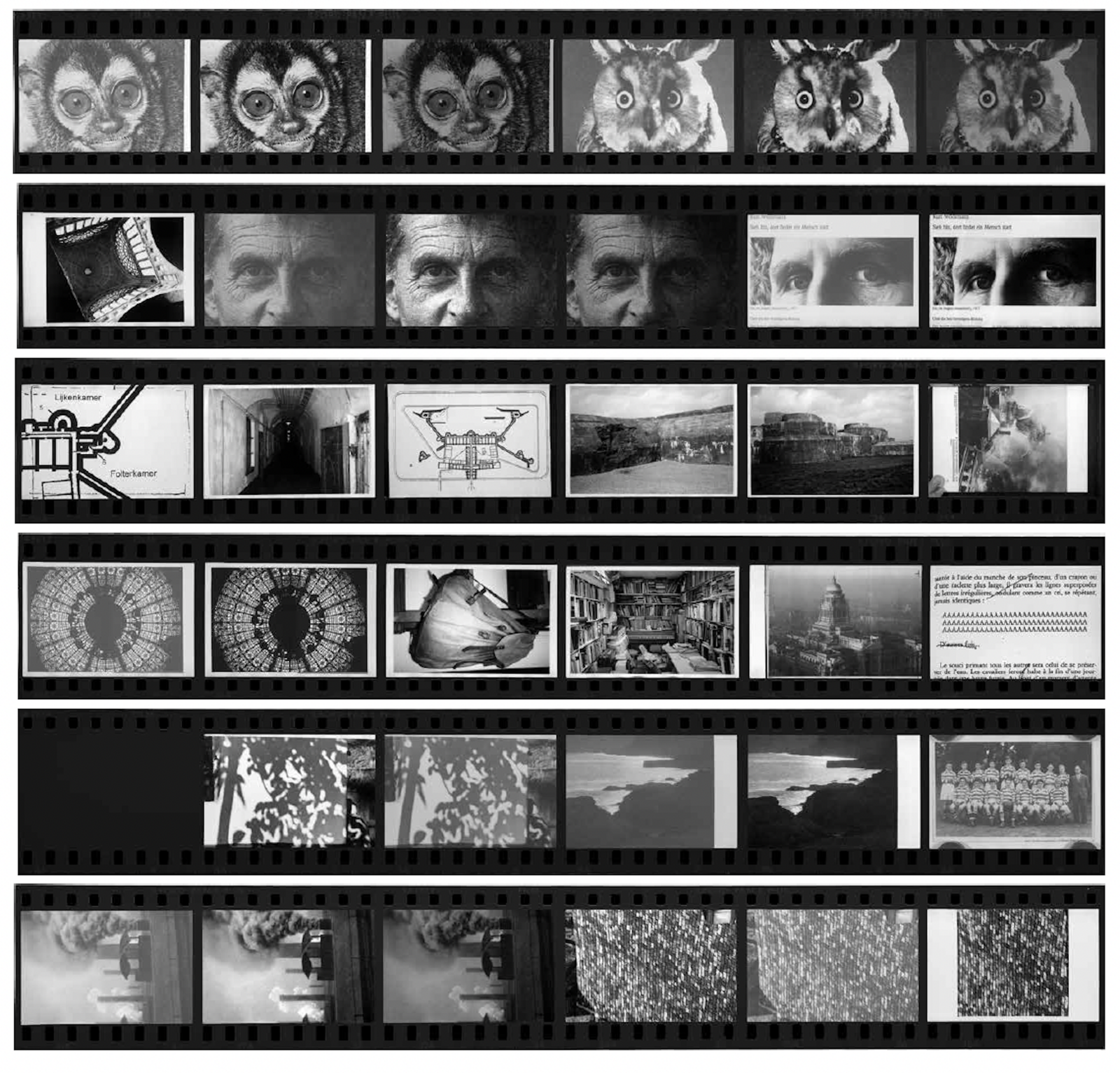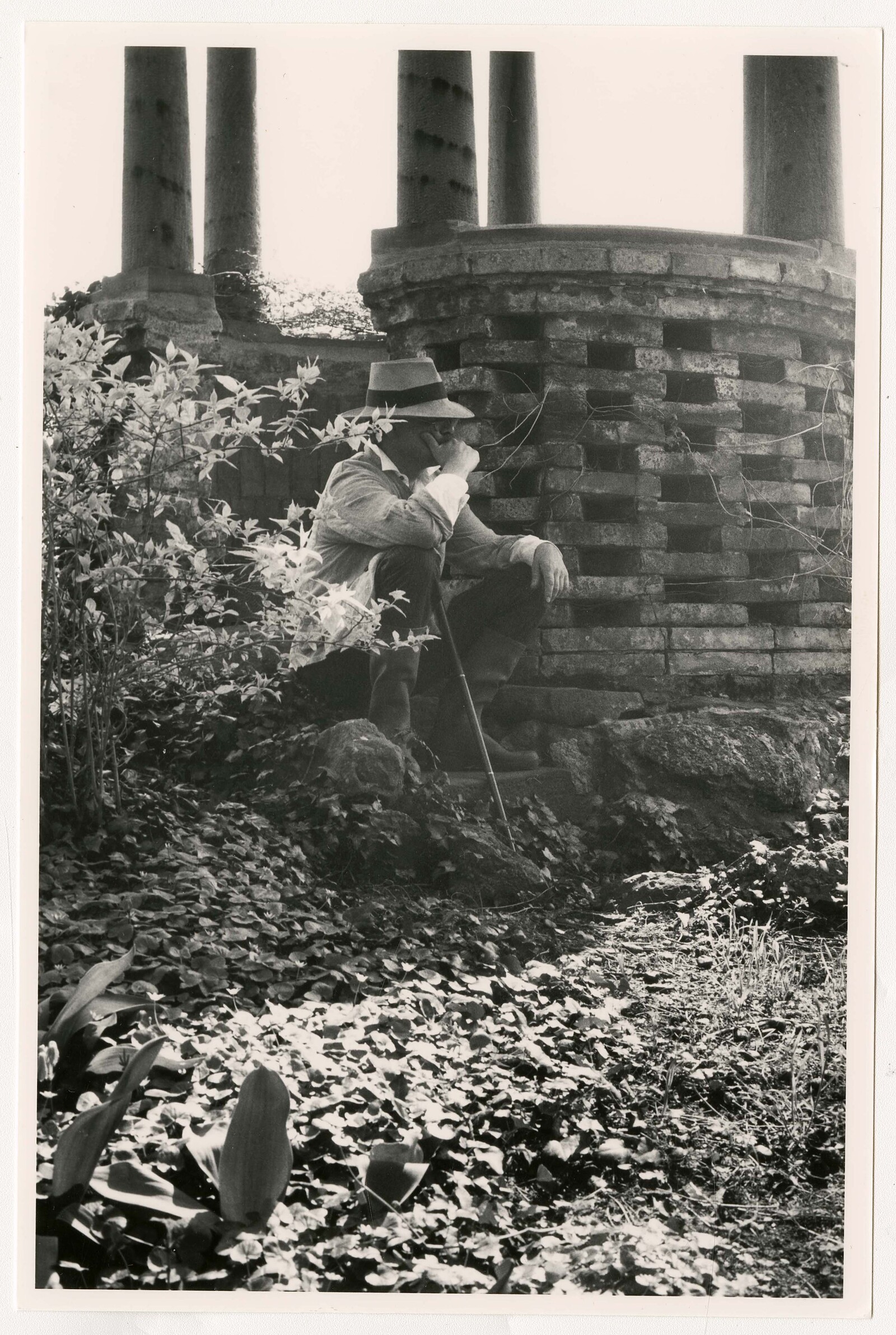“The photograph is meant to get lost somewhere in a box in an attic. It is a nomadic thing that has only a small chance to survive.” W. G. Sebald was not the first writer of fiction to punctuate his prose with darkling snapshots and other photographic fragments. In 1892 the Belgian Symbolist Georges Rodenbach reproduced vacant canal scenes and brooding convents in his novel of obsession and uncanny doubling, Bruges-la-Morte. More renowned: André Breton’s inclusion of Parisian fragments and photographic montage in Nadja (1928). Sebald was well informed about such precursors, as also the Benjamin-Sontag-Barthes axis that sees photographs as phantasmic remnants and memento mori. But images in (and by) Sebald have a more vivid and varied life than this spectral-surreal lineage allows.
Until recently, the German author’s photographic habits and motivations have mostly been gleaned from interviews—he died in 2001—and from the books themselves, in which images of characters, landscapes, architecture, and historical disaster may or may not match the “real” thing. So many ways of saying: They are not illustrations, you know. What, then? There is no simple answer in Shadows of Reality, a lavish volume that collects as far as possible (with restrictions from his estate) the photographs Sebald made, happened upon, or sought out for his novels—if that is what they are. “The writer’s curse,” Sebald once said, “is that he doesn’t work with tangible matter of any kind, and this is a little device that helps.” He liked to pretend that the often small or grainy images on the page were products of his amateur fiddling at the photocopier. But Shadows of Reality reveals more convoluted, collaborative practices, and a laconic visual style in his own photographs.
Sebald taught German literature, and latterly creative writing, at the University of East Anglia, and in part this book is a product of his academic affiliations. As co-editor Nick Warr relates, a box labeled “Sebald” languished, after the author’s death, at the university’s Sainsbury Centre for Visual Arts. For years, Sebald had worked with Michael Brandon-Jones, a photographer in the art history department, to produce carefully calibrated versions of pictures from books, archives, flea markets, and his own snapshot collection. Contrary to lit-crit legend, these photographs were not typically degraded or obscured; Sebald and Brandon-Jones worked instead at the right cropping, image size, and place on the page. Shadows of Reality gives us access to this relationship in a long interview with Brandon-Jones, and some fascinating iterations of key images in the Sebald corpus. Here are the found photos from which he derived characters in The Emigrants (1992) and Austerlitz, (2001) and the sources for his meditations on Kafka and Stenhal in Vertigo (1990). But also: ordinary seaside colour snapshots turned into monochrome studies of spiritual-historical desolation on some East Anglian clifftop.
Given Sebald’s residence in that flat, soggy portion of England, and the fact this book originates among UEA academics, it’s perhaps no surprise that Shadows of Reality is skewed, in its attendant essays, toward The Rings of Saturn (1995): originally published in German with the subtitle An English Pilgrimage. There’s been a tendency among admirers and detractors of The Rings of Saturn to treat it as a more or less successful psychogeography of the territory. (In this sense, both the rapt nature writer Robert Macfarlane and the skeptical hauntologist Mark Fisher got the book slightly wrong.) In fact, Sebald’s is a flatland of the mind—a pathetic-fallacy landscape to correlate with his narrator’s abstracted mind, adrift in history. The photographs—melancholy animals, medieval and Cold-War ruins, almost blank stretches of fen, beach, and sea—are more atmospheres than images.
Accordingly, the editors of Shadows of Reality assert: “In gathering this material together we are not seeking to make any evaluation of Sebald’s qualities as a photographer.” This makes sense of course: even when deploying his own photographs—typically made in color with a tourist-grade point-and-shoot, and developed at a Boots pharmacy—he seems more collector than photographer, let alone artist. Still, there are wittily mundane or laconic pictures here that cast Sebald very nearly as a wry conceptualist. Some of the best-known photographs in The Rings of Saturn depict the lugubrious mansion of Somerleyton Hall: greenhouses aglow at night, a captive and lonely Chinese quail in the grounds. Among the unused photographs Sebald took on the estate: a garden view, bisected and botched by a thick hedge, that might have been made by Luigi Ghirri. In Deauville, France, in 1991, Sebald trains his camera on a corner of his hotel bed, a patch of dull carpet, his own mirrored reflection almost erased by a harsh built-in flash. At such moments, and others among his travels in Europe, it’s possible to wish for a short, suggestive volume of Sebald’s color snapshots, in place of the scholarly monument.
This is not the first study of Sebald and photography: there have been academic monographs on the subject, and in 2007 Lise Patt and Christel Dillbohner published Searching for Sebald: a 630-page anthology of essays and art projects related to his works. Shadows of Reality is more clearly tethered to the images themselves and their presence in his books, rather than speculations about Sebald’s affinities with actual art practices. (Some obvious analogues of his writer-collector modus: Gerhard Richter’s Atlas (1962–2013), Tacita Dean’s flea-market album FLOH (2001), certain works by Sophie Calle.) But this new book also broaches a new subject: the extent to which Sebald may have shared and predicted an urge that’s evident in some of his acolytes. (Teju Cole is the most obvious example—but also, mea culpa.) That is, the desire not only to combine word and image, but to supplant the labor of writing with the found miracle of photography. If it’s too easy now to conjure a doleful and significant “Sebaldian” junction of text and image, Shadows of Reality hints at a Sebald with a more accidental (and contemporary) aesthetic.
Shadows of Reality: A Catalogue of W.G. Sebald’s Photographic Materials is edited by Clive Scott and Nick Warr and published by MIT Press with Boiler House Press.


